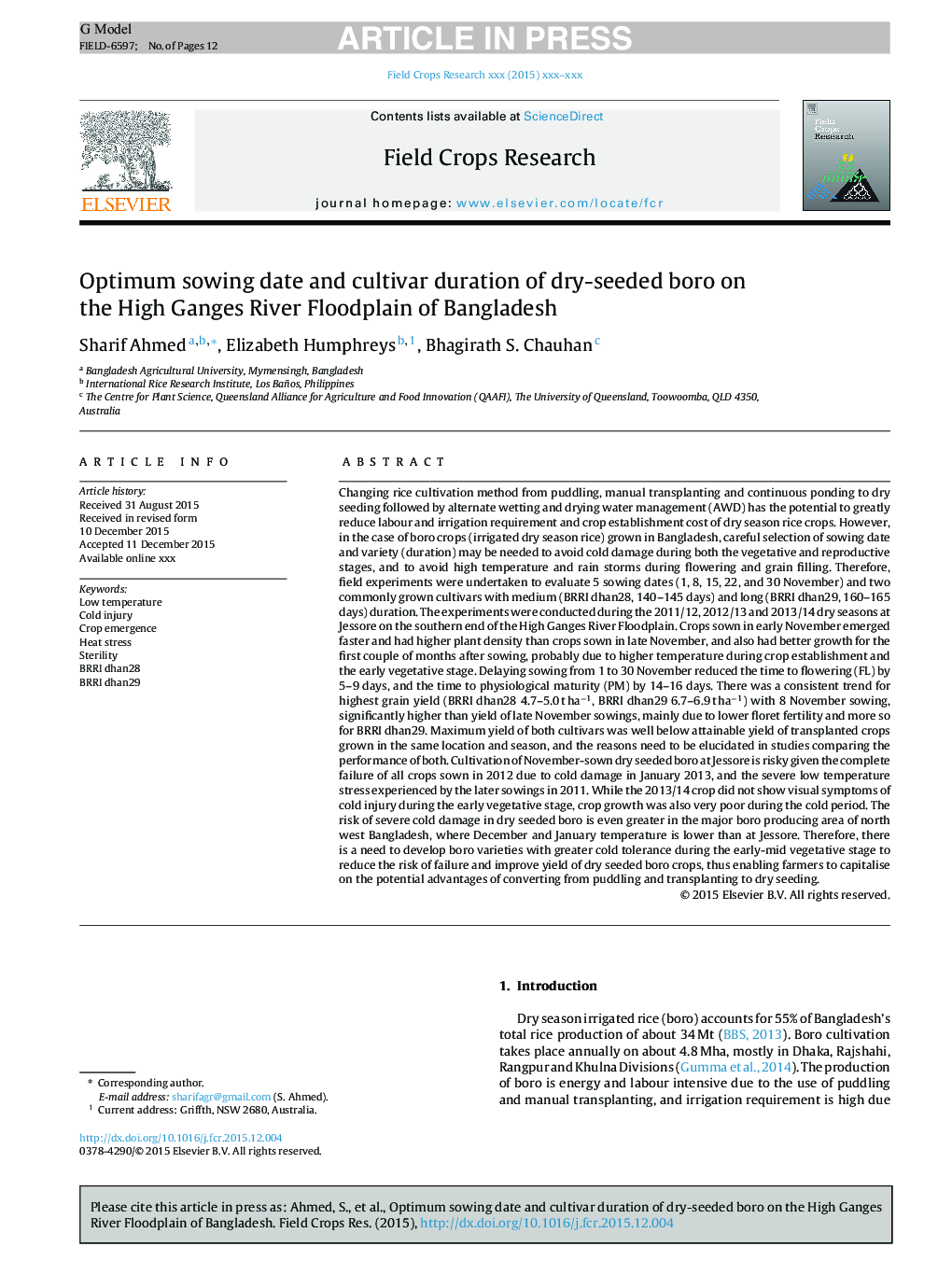| Article ID | Journal | Published Year | Pages | File Type |
|---|---|---|---|---|
| 6374474 | Field Crops Research | 2016 | 12 Pages |
Abstract
Changing rice cultivation method from puddling, manual transplanting and continuous ponding to dry seeding followed by alternate wetting and drying water management (AWD) has the potential to greatly reduce labour and irrigation requirement and crop establishment cost of dry season rice crops. However, in the case of boro crops (irrigated dry season rice) grown in Bangladesh, careful selection of sowing date and variety (duration) may be needed to avoid cold damage during both the vegetative and reproductive stages, and to avoid high temperature and rain storms during flowering and grain filling. Therefore, field experiments were undertaken to evaluate 5 sowing dates (1, 8, 15, 22, and 30 November) and two commonly grown cultivars with medium (BRRI dhan28, 140-145 days) and long (BRRI dhan29, 160-165 days) duration. The experiments were conducted during the 2011/12, 2012/13 and 2013/14 dry seasons at Jessore on the southern end of the High Ganges River Floodplain. Crops sown in early November emerged faster and had higher plant density than crops sown in late November, and also had better growth for the first couple of months after sowing, probably due to higher temperature during crop establishment and the early vegetative stage. Delaying sowing from 1 to 30 November reduced the time to flowering (FL) by 5-9 days, and the time to physiological maturity (PM) by 14-16 days. There was a consistent trend for highest grain yield (BRRI dhan28 4.7-5.0 t haâ1, BRRI dhan29 6.7-6.9 t haâ1) with 8 November sowing, significantly higher than yield of late November sowings, mainly due to lower floret fertility and more so for BRRI dhan29. Maximum yield of both cultivars was well below attainable yield of transplanted crops grown in the same location and season, and the reasons need to be elucidated in studies comparing the performance of both. Cultivation of November-sown dry seeded boro at Jessore is risky given the complete failure of all crops sown in 2012 due to cold damage in January 2013, and the severe low temperature stress experienced by the later sowings in 2011. While the 2013/14 crop did not show visual symptoms of cold injury during the early vegetative stage, crop growth was also very poor during the cold period. The risk of severe cold damage in dry seeded boro is even greater in the major boro producing area of north west Bangladesh, where December and January temperature is lower than at Jessore. Therefore, there is a need to develop boro varieties with greater cold tolerance during the early-mid vegetative stage to reduce the risk of failure and improve yield of dry seeded boro crops, thus enabling farmers to capitalise on the potential advantages of converting from puddling and transplanting to dry seeding.
Related Topics
Life Sciences
Agricultural and Biological Sciences
Agronomy and Crop Science
Authors
Sharif Ahmed, Elizabeth Humphreys, Bhagirath S. Chauhan,
